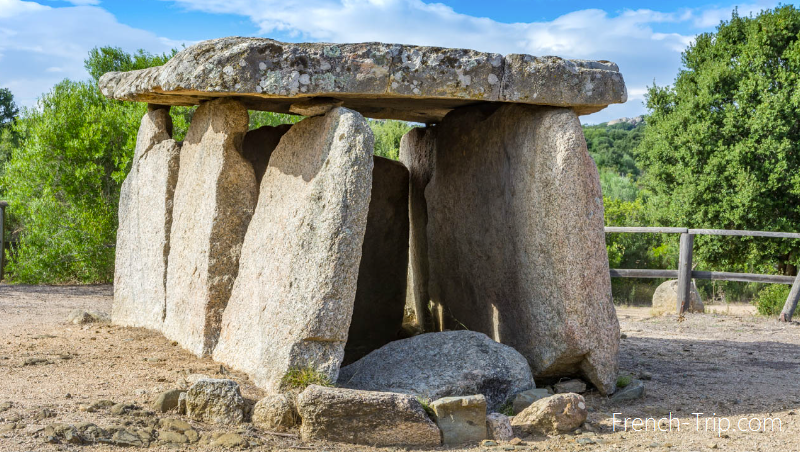Sartene

Sartène is a small but very interesting town in southern Corsica, renowned for its perfectly preserved old town. It is famous for being the “most Corsican of all Corsican towns.” Particularly notable is its “Catenacciu” procession, where penitents atone for their sins during Easter. Besides this, Sartène is a striking example of Corsican austerity.
Moreover, Sartène is known for producing some of the best Corsican wines (AOC Sartène). If you’re in the vicinity of Bonifaccio, it’s worth stopping by here for a few hours, or you might even visit during Easter to participate in the penitential rites. Be sure to book a hotel and park your car in advance, as the city center will be closed to traffic during this period.
Sartène is considered a town of art and history and one of France’s most beautiful Detours.
Weather in Sartene:

Sartène travel guide
Sartène is built like an amphitheater on the crest of the Rizzanese Valley, 13 km from Propriano. Described by Prosper Mérimée as “the most Corsican of Corsican towns,” Sartène has preserved its character with its strict old traditions, such as the remarkable Catenacciu procession—possibly the oldest ceremony on the island. Exploring the old district, a true labyrinth of stairways and arched passages, will be the highlight of your visit to Sartène.
Is Sartène Worth Visiting?
Sartène is definitely worth visiting for its rich historical and cultural heritage. The town offers a unique glimpse into Corsican history with its well-preserved monuments, museums, and picturesque landscapes. The lively central square and local markets add to its charm, making it a great destination for tourists interested in history, architecture, and local culture.
Get in
By Plane:
- Figari–Sud Corse Airport (FSC): Located about 20 km from Sartène. From the airport, you can hire a car or take a taxi to reach Sartène.
- Ajaccio Napoleon Bonaparte Airport (AJA): Located about 77 km from Sartène. From here, you can also hire a car or use public transport options to reach Sartène.
By Bus:
- Sartène is accessible by daily bus services from Ajaccio, Propriano, Porto-Vecchio, and Bonifacio. These buses connect Sartène to major towns and cities in Corsica.
The town is small enough to be explored on foot, but for more flexibility and to explore surrounding areas, renting a car might be the best option.
History of Sartène
The history of Sartene goes back to the Middle Ages. Granite buildings from the early 16th century can still be seen on the streets.
One of the main incidents in the history of the city was an attack by Algerian pirates in 1583, when about 400 people were taken into slavery from the city. Such attacks continued until the 18th century.
The castle ruins date back to the early 13th century. At the time, the city belonged to the powerful Della Rocca family until they were defeated by the Genoese in the 16th century.
Vendetta
Throughout its history, the city has been plagued by vendettas. In the 1830s, a bloody feud between two families resulted in the windows of houses being bricked up and guards patrolling the streets. The vendetta is reflected in the severity of local houses, which look more like impregnable fortresses.

What to See in Sartène
- Place de la Libération: A central square in Sartène, known for its lively market and cafes. It is a historic meeting place for locals
- Regional Museum of Prehistoric Corsica and Archaeology: Features exhibits on Corsican prehistory, including statue-steles, Neolithic artifacts, and Roman coins
- Église Sainte-Marie: A historic church built in 1766, classified as a Historic Monument
- Église San Damiano: A neoclassical style church also built in 1766
- Sartène Watchtower (Échauguette de Sartène): A symbol of the town, dating back to the late 16th century and listed as a historical monument
- Town Hall (Hôtel de Ville): Another historical monument in Sartène
- Spin’ a Cavallu Bridge: A famous Genoese bridge from the 13th and 15th centuries, known for its architectural significance

Main attractions of Sartène
Sartène, the chief town of its district and the largest municipality on the island since 1864, is built at an altitude of 300 meters. The town has grown around medieval buildings on the rocky spur of Pitraju. Entering Sartène via the old Scaleddi bridge, you’ll notice that part of the old fortifications with a corner watchtower is still intact.

Palace of the Governors
From 1520 onwards, the Genoese surrounded Pitraju and the A Manighedda area with walls, including the fortified building known as the Palace of the Governors, now the town hall. This sixteenth-century building, still adorned with battlements, housed the residence of the Genoese lieutenant. At its base, the Genoese constructed a vaulted entrance, possibly with a drawbridge, leading to the citadel. Above this vault is the city coat of arms (a crenellated tower surrounded by two mouflons and topped with a Moor’s head, all in silver).
Church of Santa Maria Assunta
The parish church of Santa Maria Assunta contains treasures, some of which are classified as historic monuments. This rich heritage includes a sixteenth-century marble statue of the Virgin and Child, two paintings — one representing the Annunciation (seventeenth century) and the other Mater Dolorosa — framing a polychrome marble altar imported from Italy (17th century), and a set of fourteen Stations of the Cross donated by Empress Eugénie. The cross and bare chains remind us that the Easter procession of Catenacciu, symbolizing Christ’s ascent to Golgotha, takes place on Good Friday evening.

Museum of Prehistoric Corsica and Archaeology
Museum of Prehistoric Corsica and Archaeology (Musée départemental de préhistoire Corse et d’archéologie). The museum is located at the top of the old town of Sartène, offering a panoramic view of the Rizzanese valley and the Gulf of Valinco. It covers an area of 1,400 square meters and houses over 250,000 archaeological objects. These artifacts include axes, iron spikes, and menhir statues, showcasing the rich prehistoric and archaeological heritage of Corsica.
The museum’s collection focuses on island archaeology, revealing the extensive history of Corsica through its exhibits. Visitors can explore fascinating collections of historic artifacts that provide insights into Corsica’s prehistoric past. The museum is considered a highlight of Sartène, which itself is described as a marvelous little hill village worth exploring.
- Entrance Fee:
- Full adult rate: €4
- Reduced price (discount card, young, student, etc.): €2.50
- Adult group rate (10 or more people): €2
- Group rate for schools or summer camps: €1.50
- Working Hours:
- October to April:
- Open Monday to Friday: 10 a.m. – 12 p.m. and 1:30 p.m. – 5 p.m.
- Closed on Saturdays, Sundays, and public holidays
- May to September:
- Open Tuesday to Sunday: 10 a.m. – 6 p.m.
- Closed on Mondays and public holidays
- October to April:
Festivals and Events in Sartène:
End of April – Early May: Corsican Carnival
The Sarten’Allegria association adds a touch of past splendor to this event, featuring animations, masked parades, and more. This event is for both children and adults of all ages. The celebration starts with the presentation of His Majesty the Carnival, including many activities for children, followed by a parade of various international groups and ending with a grand “Corso,” showcasing floats created in great secrecy by locals, and the cremation of His Majesty.
Catenacciu – Good Friday
The procession is led by an anonymous “great penitent” in a hood and red robe, carrying an imposing 31-kilogram cross and dragging a heavy 14-kilogram chain on one bare foot. He represents Christ’s journey to Golgotha and, like Jesus, he falls three times. A white penitent plays the role of Simon of Cyrene and helps Catenacciu carry the cross. No one knows his identity except the priest. He undergoes this harsh trial as a testament to a vow or for having committed a serious error. Following him are eight penitents dressed in black, also barefoot and symbolizing the Jews. Four of them carry a black canopy on which Christ, covered in a white shroud, lies. The Sartène Brotherhood supervises the penitents and performs songs such as “Miserere” and “Perdono mio Dio” during the procession. The origins of this procession are difficult to pinpoint. It starts at 9:30 PM with the opening of the Santa Maria Assunta church doors. The complex 2 km route lasts about 2 hours. At the end of the procession, the penitents kneel in the courtyard to listen to the priest’s sermon with the crowd. The procession concludes with Catenacciu entering the church, where he stands with other penitents while the faithful parade before the altar, where he kneels.
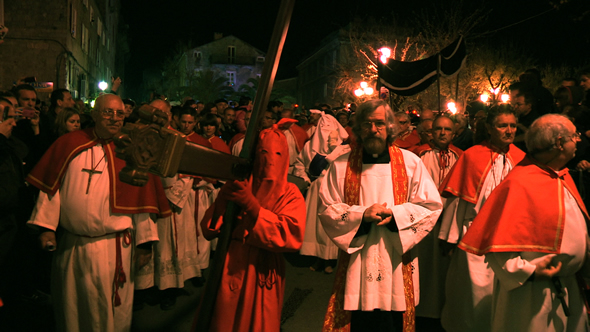
Dining in Sartène
Corsican delicacies such as cured sausages are renowned for their quality and aromatic flavor. Their unique taste comes from pigs raised outdoors with relative freedom, feeding on sweet chestnuts and acorns. The most famous cured meats are coppa (cured pork shoulder), figatelli (liver sausage), lonzu (pork loin), and prisuttu (cured ham).
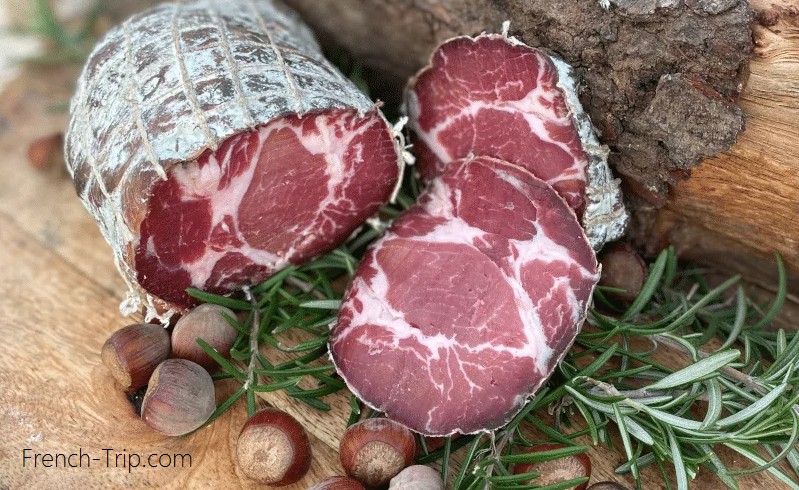
Also, try brocciu. This delightful Corsican cheese, marked with the AOC quality label, is made from sheep’s or goat’s whey. Fresh brocciu should be consumed quickly and is used in many Corsican dishes, especially in omelets and fritters.
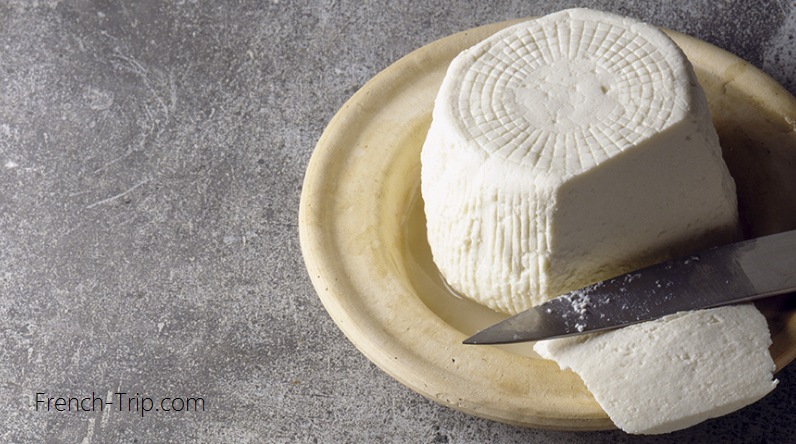
Sartène Wines
If you’re on Corsica, be sure to taste the local wines! You’re unlikely to find them elsewhere. Besides the general name Vins de Corse, Sartène has its own AOC designation. Sartène wines are considered some of the best on the island, so a few bottles make excellent souvenirs!
Shopping in Sartène
Sartène is a small town, so the shops you’ll find here will be either food or souvenir stores. Don’t miss the opportunity to buy local pâtés or liqueurs, as well as pleasant little things for the home. One of my most memorable souvenirs from Corsica was a plaster home fragrance in the shape of the island of Corsica, bought right in Sartène! A pleasant scent is guaranteed for a long time! And tasty treats will bring back memories of this wonderful island even after a long time.
You can find all of it in this small and cosy little shop in the center of Sartene:
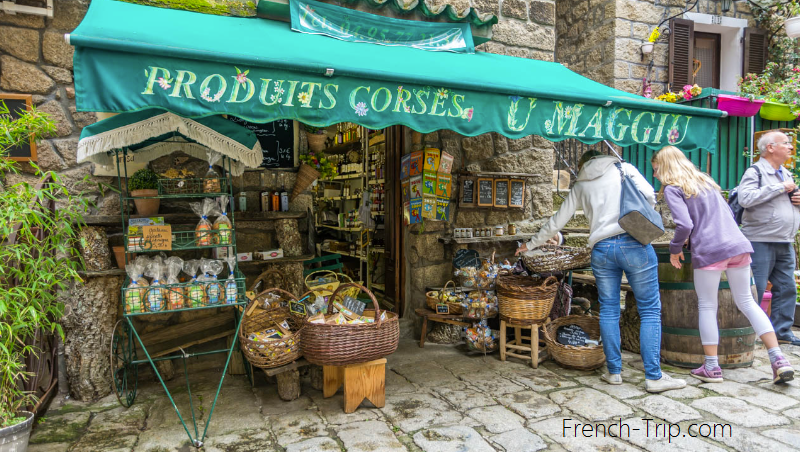
Around Sartène
Sartène is not only remarkable in itself but also serves as an excellent base for exploring the surrounding areas, where you will find ancient monuments dating back to the megalithic era. Make a tour of Megaliths of Cauria or visit Couvent Saint Côme et Damien.
Sartène on the Corsica Map:
→ Get back to Corsica travel guide
Archives
Calendar
| M | T | W | T | F | S | S |
|---|---|---|---|---|---|---|
| 1 | 2 | 3 | 4 | 5 | 6 | 7 |
| 8 | 9 | 10 | 11 | 12 | 13 | 14 |
| 15 | 16 | 17 | 18 | 19 | 20 | 21 |
| 22 | 23 | 24 | 25 | 26 | 27 | 28 |
| 29 | 30 | 31 | ||||

